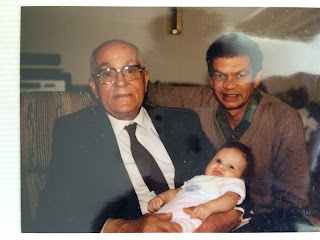Sweet Dreams are Made of This
Chocolate. The comfort of those in the throws of emotional upheaval; the sneaky under-the-desk classroom treat; the 3pm office pick-me-up; the easy-chair-in-front-of-the-telly snack.
New Zealanders' love affair with the gooey brown goodness dates back to the 1880s when biscuit-maker Richard Hudson set up the country's first chocolate factory in Dunedin and soon joined forces with the British firm Cadbury.
Back then, chocolate was synonymous with good living - the Cadbury family set up the model town Bourneville in the UK and sold tea, coffee and hot chocolate to keep workers away from the dreaded alcohol - but now the tasty treat is associated most with indulgence.
We enjoy milk chocolate, which dominates the market at 70 per cent. But we prefer dark, which holds 20 per cent of the market, to white.
So what is it about chocolate that we find so addictive?
Here's the science.
Chocolate's natural form, the cacao bean, contains the amino acid tryptophan which helps raise levels of the "happy hormone" serotonin in the brain - long story short, it gives us a natural high.
Cacao also helps promote the "bliss molecule" anandamide - a feel-good chemical released when we exercise - without having to put in the hard yards.
The slightly less scientific Britney Spears put it more succinctly saying her regular chocolate fix was "just like an orgasm".
Chocoholics might also like to point to cacao's health benefits: it's rich in vitamin C, which helps boost the immune system, and it's brimming with flavinoids and antioxidants, which promote heart health, energy and blood pressure.
Holistic medical GP Dr Helen Smith even encourages patients to eat chocolate - although she points them towards less refined versions rather than the bars you usually find next to supermarket cash registers.
"Apart from enjoyment there's not a lot of benefit because they've been cooked and contain sugar and wheat."
C HOCOLATE IS marketed to our "me first" mentality at Easter.
First the cream eggs - those tinfoil-wrapped gooey treats best eaten alone - come out just after we have seen in the New Year.
Then follow the marshmallow and mini-egg family packs which arrive as the season draws nearer.
Finally the larger novelty casket eggs appear just in time for us to buy gifts for loved ones.
New Zealanders wolf down hundreds of tonnes of chocolate in the three months surrounding Easter - snaffling half the amount of chocolate we consume in a year.
Annually we eat five kilograms a year per capita. Or about 145 chocolate bars a year.
It's little wonder the likes of Waikato Chocolates tempted our tastebuds with 50 new Easter products this year.
The company helped line The Warehouse's shelves with eggs themed from everything from Barbie to Coronation St and stuffed with the likes of lollies and nuts.
An extra 20 staff are routinely added to the company's base team of 35 for the hectic period which ends in February.
"Easter production finished a month ago, it lasts about eight months. We're in the quiet period now," managing director Hans Vetsch says with a sigh of relief.
Demand was met, contract staff finished up and creatives have started racking their brains for next year's ideas.
Also breathing a sigh is New Zealand's largest chocolate supplier, Cadbury. Hogging 80 per cent of our $40 million industry - Cadbury released 82 different products on to the market this Easter.
Mini caramel bunnies were introduced along with chocolate mousse desserts in egg cartons.
We are a soft and gooey lot, general manager Iaan Buchanan says. Marshmallow eggs go down well in New Zealand, with 12 million fluffy Cadbury eggs sold at Easter.
But we are also big on caramel, with Caramello bars and blocks among our most favourite flavours.
Cadbury is keeping an eye on the growing sales of lighter mousse, targeted at a more adult market. But nuts still hold sway in more than 40 per cent of products.
CHEFS' EXPERIMENTS
Ponsonby chef Sid Sahrawat loves experimenting with chocolate – from France, no less.
He uses a dark Valrhona with 64 per cent cocoa in his desserts because he says the quality is "paramount".
"It's very versatile, it's very rich, it has a good bitterness. It's soft."
The white version also goes well with crab, caviar, duck or venison.
Sahrawat's latest creation involves melting dark Valrhona and freezing it in a mould for several hours to make a thin-shelled tube.
He fills it with passionfruit sorbet and plates it with a Valrhona ganache, licorice puree, brown butter cake, olive praline, mini meringues and popcorn powder for a lively, decadent dessert.
After presenting, he pours a hot chocolate sauce over the frozen tube to collapse it for a fun effect.
"It's something really refined and then you just smash it."
He's also enjoyed adding liquid nitrogen to chocolate sauce for another crunchy-meets-gooey dessert.
Another innovator in the field is Little Bird Unbakery which makes vegan-friendly chocolate.
The nibs of the cacao beans are removed from the husks and ground, removing the cocoa butter.
The powder is then mixed with a sweetener such as coconut sugar, agave or maple, and the cocoa butter is later added back in.
It contains no dairy and has a softer, more truffle-like consistency than typical chocolate, owner Megan May says.
Like coffee or wine, the region where the beans are grown dictates flavour.
"South America makes the best chocolate," May said.
"Peruvian is more palatable, more distinctive. Cacao from Bali is more pungent."
- Sunday Star Times






Comments
Post a Comment